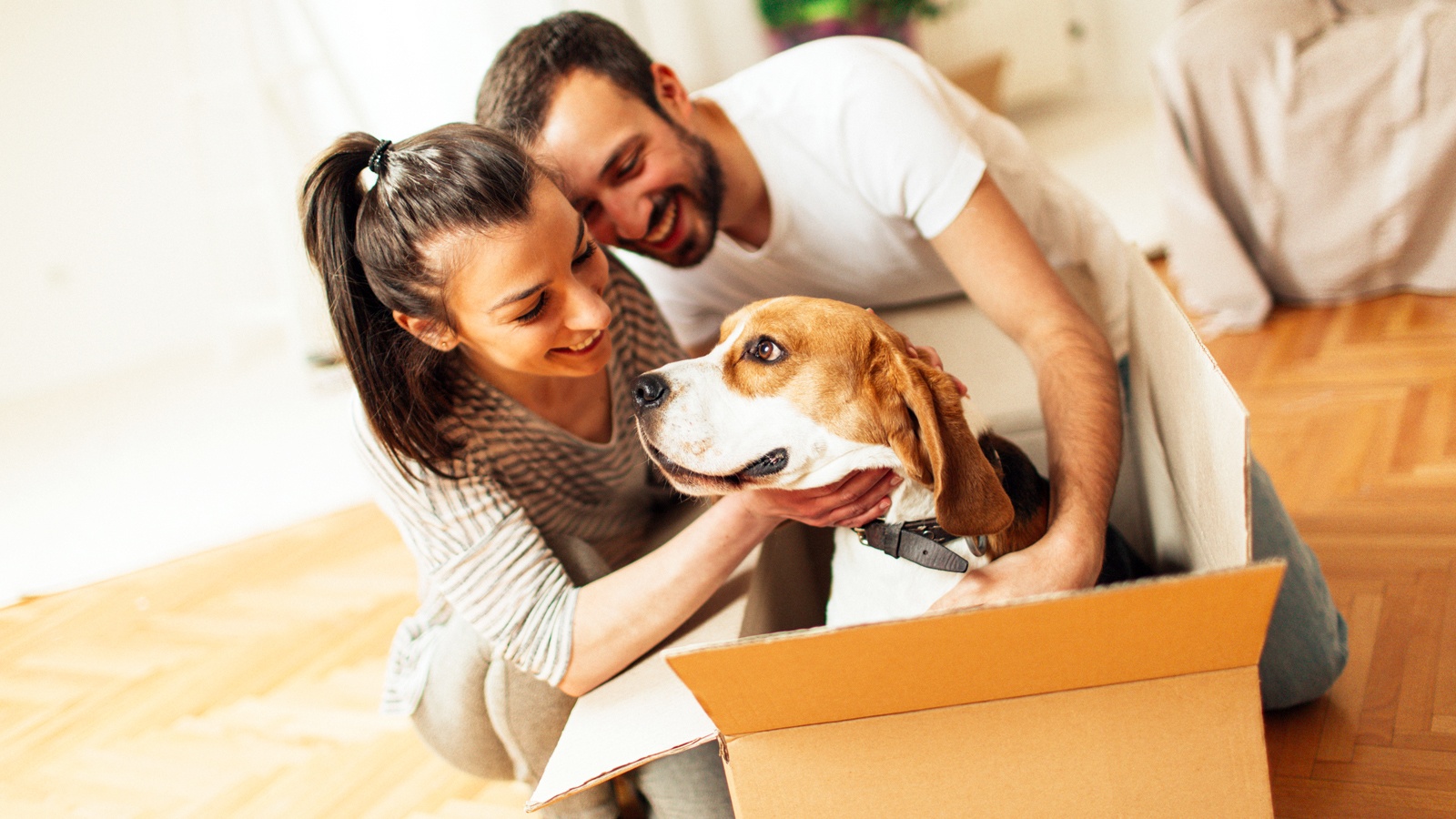Moving with Cats or Dogs

One of the most common reasons that people give up a pet is because they are moving, and they decide they cannot take the animal. They think moving with pets is too much of a hassle. If you’re a renter, you may be discouraged about finding a pet-friendly rental. Or, you may think that your pet will find the move too traumatic, and therefore is best left behind. Or, you may feel that moving is complicated enough without having to deal with pets, too.
Moving with pets
Remember, though, that your pet is depending on you now more than ever. Though moving can be an adjustment for pets, what they really want most is to be with you, wherever you are. There are challenges to moving with your pet, but with a little planning and creative thinking, the move can be accomplished without too much stress for either you or your pet. Here are ways to deal with each of the issues mentioned above:
How am I going to find a pet-friendly rental?
The key here is planning ahead; allow plenty of time for your search. If you are moving to an area where there’s a lot of competition for rental housing, start by gathering proof that you are a responsible person. A letter of recommendation from any or all of the following people can help a lot: your current landlord, your veterinarian, your trainer, your groomer, a neighbor or two, a pet sitter or dog walker. All of these people can contribute to the image of your dog or cat as a valued, well-behaved family member.
Next, start checking the local newspaper and ask local realtors about pet-friendly housing. Here are several websites that might be helpful in your search:
- www.peoplewithpets.com
- www.apartmentlist.com
- www.hsus.org (search for “pet friendly housing”)
You could also try calling the local humane society in the area where you’ll be moving. They may have a listing of pet-friendly rentals.
Wouldn’t my pet be better off left behind at the local animal shelter?
If you think it would be more humane to drop your pet off at your local shelter, you aren’t aware of the reality of pet overpopulation in this country. Around 625,000 dogs and cats are killed in U.S. shelters each year. Many of them are cute, lovable, young, healthy and/or special in some way, just like your pet. Even if your pet does get adopted out to a new home, being in a shelter for a period of time and then adjusting to a new home can potentially involve a great deal more stress for the animal than simply moving.
How can I make the move less stressful for my pet and for me?
If you’re moving to another state or another part of the country, the trip itself can seem daunting. It doesn’t have to be traumatic; once again, it pays to plan ahead. If your pet is not accustomed to riding in the car, get him used to it gradually. Start by sitting in the car (without going anywhere) with him for short periods of time. To make it a more positive experience, you can give him a treat or play with him. Progress to taking your pet for short jaunts in the car. By the time you’re ready to go on a long trip, traveling in the car should be less stressful for your pet. If your pet continues to be anxious, try giving him one of the herbal formulas designed to soothe and calm. Again, try this ahead of time, in case your pet has an adverse reaction. Sometimes, playing the radio or an audio book can help relax your pet.
If you’ll need to stop overnight, you should plan ahead by locating pet-friendly accommodations along your route. Many motel and hotel chains take pets. Here is a helpful website that list pet-friendly places to stay and also contain helpful hints for traveling with pets:
If you have a dog, give her a good long walk before you start out and make frequent stops so she can stretch her legs. Keep her on a leash at all times when she’s outside the car or hotel room. Even if she normally responds to voice commands, she may spook easily in new environments. Cats should be kept in a carrier or crate while you’re driving. At rest stops, you can let your kitty out (in the car, of course) to use the litter box. Or, use a crate large enough to hold a small cat-litter tray, as well as bedding and small food and water dishes.
Make sure you take along a supply of your pet’s regular food and some treats – now is not the time to change your pet’s diet. Also, you might want to bring along your pet’s favorite toy or bed to provide comfort and familiarity for your pet during your stay in foreign accommodations.
When you arrive at your new home, be extra careful to keep your pets safe and secure. If your dog will be spending time in a fenced yard, make sure that the fencing is sturdy and has no escape routes. For a few days, you might not want to leave her alone outside while you’re away. Even if you have an indoor/outdoor cat, don’t allow your cat outdoors for at least a month. Cats are very place-oriented and have been known to attempt to return to their former home. Establish a feeding and play/exercise routine for your pets as soon as possible, to reassure them that life goes on as usual. Try to spend extra time with your pets so they’ll feel comfortable and safe in their new surroundings.